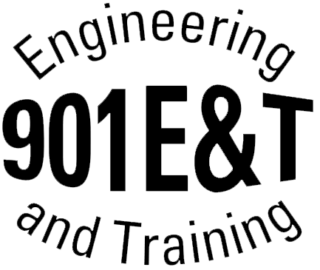New 5 day course
Unlock the Secrets of
MIL-DTL-901E
Shock Qualification

Experience
34 years Of Experience

Shock qualification Expert
MIL-DTL-901E Testing & Equipment Qualification

Engineering and Training
Comprehensive Training, Targeted Training, Consulting

Mr. Hartsough
With the highest level of Delegated Approval Authority (DAA), Mr. Hartsough oversaw Non-Standard Testing, Non-Standard Test Fixtures Approval, Alternate Vehicle Testing Approval, Component Testing Approval, and Antenna Testing Approval, while covering a broad spectrum of equipment including Hull, Mechanical and Electrical equipment, NIWC, NAVAIR, IWS, and BUMED equipment (Excluding Weapons) across all surface ship classes.
Mr. Hartsough has been the leading Navy educator in shipboard equipment Shock Qualification, providing training to numerous Navy Commands (NAVSEA, NSWCs, NUWC, SUPSHIPs, Planning Yards, PEOs), Shipbuilders, Navy contractors, equipment manufacturers and shock test facilities. Additionally, Mr. Hartsough has been a key contributor at the Shock & Vibration Symposium for over two decades, conducting tutorials in MIL-DTL-901E Testing, Shock Qualification Extensions, Alternate Vehicle and Component Testing, and Equipment Shock Testing Failure Modes.
His 34-year Navy career includes; supporting Full Ship Shock Trials (FSSTs), serving as the HM&E Coordinator on the LHD 1 and supporting the LSD 44 and CVN 78 FSSTs, contributing to the development of the first Total Ship Survivability Trials (TSSTs) on the DDG 55 and DDG 58 as the Co-Damage Control Coordinator, conducting shock inspections for multiple ship classes, acting as the Survivability In Service Engineering Agent (ISEA) for transparent armor and small arms composite armor, and fulfilling a one-year role as an Action Officer in the Live Fire Office of OSD/DOT&E.
MIL-DTL-901E Training
- Navy’s acquisition requirements and responsibilities
- Shock qualification documentation process
- Background and history of shock qualification
- MIL-DTL-901E test vehicles details, including:
- Test inputs
- Test setup
- Test series requirements
- Limitations of test vehicles
- Shock extensions, covering:
- Minimum requirements for a shock extension
- Cost comparison to testing
- Component testing to support extensions
- Evaluation of equipment modifications
- Failure modes and effects analysis related to shock testing
- Manufacturing and material differences
- Component testing to support shock extensions, including:
- Simulation of installed environment
- Component failure mode evaluation
- Extension details when using component testing
- Demonstrations of shock failure modes typical in equipment designs
- Shock isolator selection, limitations, and test requirements
- Test Fixture Selection and Non-Standard Fixture Requirements and approval process.









